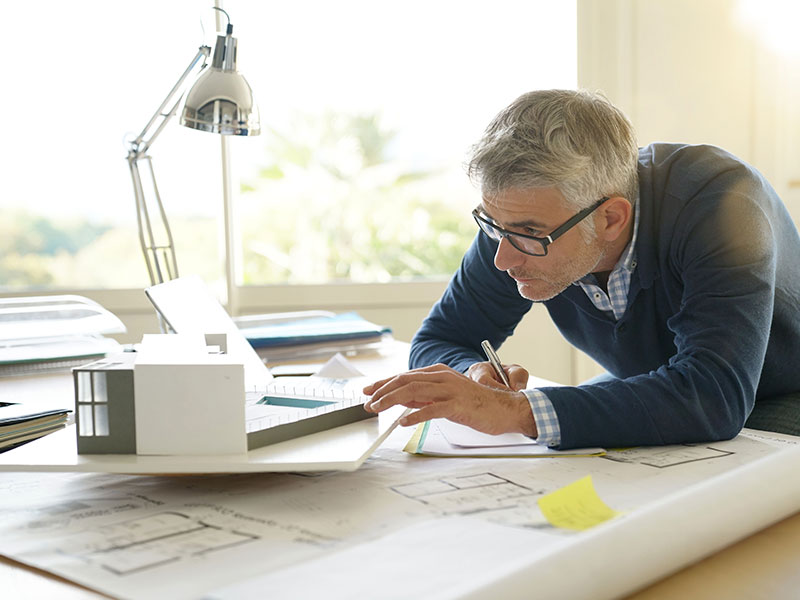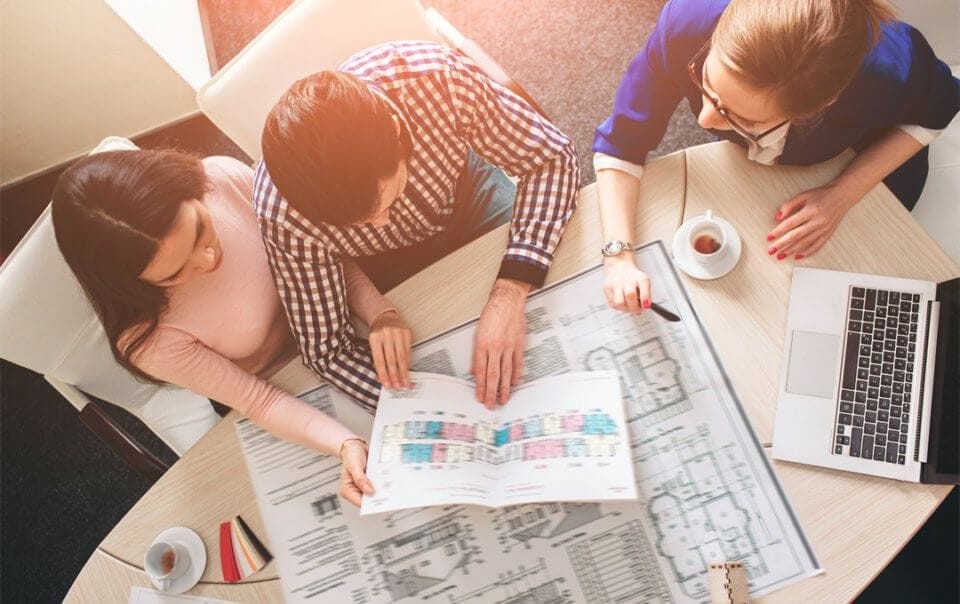The Function of Sustainability and Modern Technology in Modern Architect Practices
Sustainability and innovation are reshaping modern-day style in means you might not anticipate. By accepting environment-friendly products and smart innovations, designers are not simply producing structures; they're crafting settings that boost our lifestyle. This change isn't practically visual appeals or performance; it has to do with establishing a liable strategy to our earth's future. What's driving this makeover, and how can these modifications effect your community?
The Value of Lasting Architecture
Sustainable architecture is necessary not simply for the setting but also for improving our high quality of life. When you accept lasting layout, you're not just lowering your carbon impact; you're creating spaces that promote wellness and well-being.
Additionally, sustainable style often leads to stronger areas. When buildings are developed with green practices, they can motivate others to do the same, fostering a society of sustainability. You'll observe enhanced residential or commercial property worths and a greater sense of satisfaction in your surroundings.
Finally, by prioritizing sustainability, you're buying the future. You're making certain that future generations delight in a much healthier earth and dynamic communities. So, when you consider your following task, think regarding exactly how lasting style can boost your life and those around you.
Innovative Products Changing Structure Practices
As you explore cutting-edge materials in style, you'll find that eco-friendly building products are reshaping exactly how we think of sustainability. Recycled material developments are giving new life to waste, while clever material innovations enhance constructing efficiency. These developments not just promote eco-friendliness however additionally push the boundaries of layout.
Naturally Degradable Construction Products
While typical building and construction products often add to ecological deterioration, eco-friendly building products are arising as a feasible alternative that changes structure techniques. You can explore choices like mycelium, bamboo, and hempcrete, which not just minimize waste however also promote sustainability. These products break down naturally at the end of their lifecycle, reducing landfill contributions. By incorporating biodegradable alternatives into your designs, you're not simply improving visual charm; you're additionally making a positive influence on the earth. Plus, they frequently need less power to create, even more reducing your task's carbon impact. As you adjust to these ingenious materials, you'll discover that they provide toughness and versatility, enabling you to produce structures that straighten with modern worths of sustainability and duty.
Recycled Content Advancements
Recently, innovative materials with high recycled web content have revolutionized building techniques, using designers interesting new options - Architect. You can currently include materials like recycled steel, which not only minimizes waste yet additionally boasts remarkable strength. Recycled glass is another superb choice, offering visual charm while reducing ecological impact

Smart Product Technologies
Smart product innovations are reshaping the way you believe concerning building methods, providing vibrant options that adapt to changing conditions. These ingenious products, such as self-healing concrete and thermochromic glass, improve structure performance and sustainability. Imagine frameworks that can adapt to temperature level changes or repair themselves when harmed-- these advancements are no more simply ideas. By incorporating clever products, you can produce energy-efficient designs that react to their atmosphere, reducing general energy intake. The ability to check and adjust in real-time streamlines maintenance and lengthens the life expectancy of structures. As you welcome these technologies, you're not just introducing; you're contributing to an extra sustainable future in style, merging functionality with ecological obligation.
The Assimilation of Smart Technologies in Layout
As technology advances, incorporating clever options into architectural style ends up being crucial for developing efficient and lasting areas. You can incorporate smart innovations like developing management systems, which enhance power use and enhance occupant comfort.
Including Net of Things (IoT) devices permits smooth communication among numerous building systems, enabling you to make data-driven choices that improve capability. Smart products that react to ecological modifications can additionally boost your layout, offering dynamic options to ever-changing problems.
Energy Efficiency and Renewable Resource Solutions
While many architects focus on aesthetic appeals, prioritizing energy performance and renewable resource remedies is important for sustainable layout. You can begin by including passive solar layout, which enhances natural light and warmth, reducing dependence on man-made lighting and furnace. Utilize high-performance insulation and energy-efficient home windows to lessen power loss.
Don't forget sustainable power systems-- install solar panels or wind generators to create clean power on-site. You can likewise take into consideration including geothermal home heating and cooling down systems for a more lasting temperature level regulation.
By picking energy-efficient appliances and lighting, you'll not only lower energy usage however additionally reduced operational prices for building passengers.
Incorporating these principles into your styles not just benefits the environment yet also boosts the building's charm and worth. Ultimately, your dedication to power efficiency and renewable resource will certainly establish your jobs apart in a competitive market.
Water Conservation Techniques in Modern Design
Incorporating water preservation approaches into modern-day architecture is necessary for creating lasting buildings that lessen ecological effect. You can achieve this by incorporating rain harvesting systems, which accumulate and save rain for watering and non-potable usages. Applying low-flow components and smart watering systems likewise minimizes water consumption, making sure efficient usage throughout the structure.
Think about making use of drought-resistant landscaping, which needs less water and advertises biodiversity. Integrating permeable paving products permits why not try this out rain to penetrate the ground, decreasing drainage and reenergizing groundwater materials.
Additionally, mounting greywater recycling systems can repurpose water from sinks and showers for bathroom flushing or watering, additional saving resources.
The Impact of Biophilic Layout on Wellness
Biophilic design brings nature inside, and you'll notice its positive results on your health and happiness. By improving indoor air high quality and linking you with all-natural components, these areas can change your daily experience. Allow's discover how incorporating these features can increase your general well-being.
Nature's Impact on Wellness
Exactly how does our environment form our health? It can greatly improve your physical and psychological health when you incorporate elements of nature into your environments. Biophilic style, which stresses natural light, plants, and natural materials, cultivates a feeling of link to the outdoors. This link can decrease stress and anxiety, increase state of mind, and enhance cognitive feature. You might locate that spaces loaded with plant motivate creativity and productivity, making your daily jobs feel extra satisfying. Additionally, natural environments can assist you feel a lot more loosened up and concentrated, advertising general health. By prioritizing nature in your environment, you're not simply enhancing your area; you're likewise supporting your wellness and joy. Welcoming biophilic design is a step towards a healthier way of life.
Enhancing Indoor Air Quality
While lots of individuals focus on appearances use this link and capability in style, boosting indoor air quality plays a necessary role in your total health. By incorporating biophilic layout components, you can enhance air high quality naturally. Focusing on these aspects in your layout will not just raise your space but also advertise a sense of calmness and well-being.
Link With Natural Aspects
When you attach with natural components in your area, you not just boost its aesthetic charm yet additionally substantially boost your health. Biophilic design encourages you to include features like plants, all-natural light, and natural products. These components develop a relaxing environment, decreasing anxiety and anxiety.
Future Trends in Lasting Architectural Practices
As the world faces pressing environmental obstacles, engineers are increasingly embracing innovative methods to sustainability that redefine exactly how we design and construct. You'll see a rise in biophilic style, integrating nature into urban rooms to improve wellness and lower power consumption. Smart innovations, like AI and IoT, are improving energy management in buildings, maximizing resource use, and lessening waste.
Furthermore, modular building is gaining traction, enabling faster, extra reliable structure procedures while reducing ecological effect. Making use of lasting products, such as reclaimed wood and recycled steels, is coming to be typical method. As you check out these trends, expect a change toward circular design, emphasizing the lifecycle of products and promoting reuse and recycling.
These forward-thinking methods not just address ecological concerns but also produce much healthier, extra resilient communities. By staying educated about these fads, you can assist shape a sustainable future in design.
Frequently Asked Inquiries
How Can Sustainability Affect Job Expenses and Budget Plans?
Sustainability can substantially affect task prices and budgets. You may discover that preliminary financial investments in green materials or innovations result in long-lasting financial savings via energy performance, reduced waste, and prospective federal government incentives, eventually stabilizing the general expenditures.
What Certifications Exist for Lasting Architecture?
You'll locate a number of certifications for lasting design, consisting of LEED, BREEAM, and the Living Building Obstacle. These qualifications aid you show your commitment to sustainability and can enhance your job's trustworthiness and attract customers.
How Does Neighborhood Society Impact Sustainable Style?
Local society shapes sustainable layout by reflecting community values, practices, and materials. You'll find that incorporating local aesthetic appeals and techniques not only appreciates heritage yet likewise enhances the functionality and approval of your architectural projects.
What Function Does Client Education And Learning Play in Lasting Practices?
Customer education and learning's important for promoting sustainable techniques. When you notify customers concerning benefits, expenses, and ecological influences, you encourage them to make educated decisions, fostering a collective method that enhances the task's general sustainability.

Exactly How Can Architects Gauge the Success of Sustainability Campaigns?
You can determine the success of sustainability initiatives by tracking power usage, evaluating product effectiveness, and celebration responses from clients. Regular audits and contrasts against benchmarks will certainly assist you refine your approaches and display enhancements effectively.
By integrating smart materials, you can produce energy-efficient styles that respond to their environment, reducing total energy consumption.While lots of engineers focus on appearances, focusing on power effectiveness and sustainable energy remedies is crucial for sustainable style. Biophilic layout, which highlights all-natural light, plants, and browse around this web-site organic materials, fosters a feeling of connection to the outdoors. Biophilic layout motivates you to include functions like plants, all-natural light, and organic materials. As you explore these patterns, anticipate a change toward circular design, highlighting the lifecycle of products and advertising reuse and recycling.